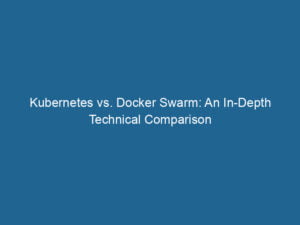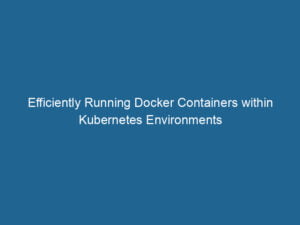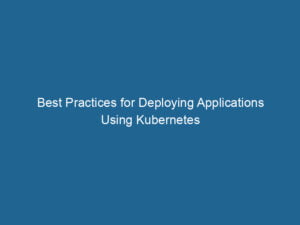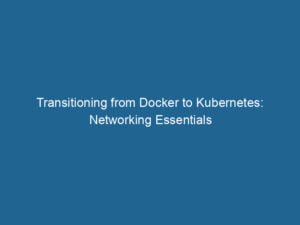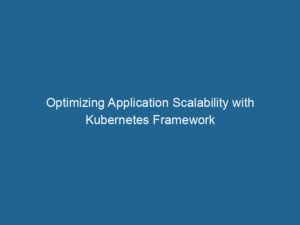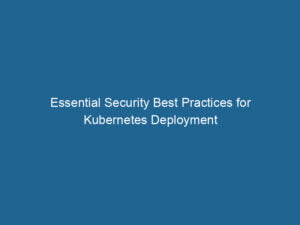KubernetesKubernetes is an open-source container orchestration platform that automates the deployment, scaling, and management of containerized applications, enhancing resource efficiency and resilience…. and Docker are two of the most powerful and widely-used technologies in the world of containerization and orchestrationOrchestration refers to the automated management and coordination of complex systems and services. It optimizes processes by integrating various components, ensuring efficient operation and resource utilization….. While Docker provides the tools to create and manage containers, Kubernetes offers a robust platform for automating the deployment, scalingScaling refers to the process of adjusting the capacity of a system to accommodate varying loads. It can be achieved through vertical scaling, which enhances existing resources, or horizontal scaling, which adds additional resources…., and management of containerized applications. Together, they form a comprehensive solution for developing and operating complex, distributed systems.
Docker is a platform that allows developers to package an application and its dependencies into a portable containerContainers are lightweight, portable units that encapsulate software and its dependencies, enabling consistent execution across different environments. They leverage OS-level virtualization for efficiency….. Containers provide isolated environments that ensure consistent behavior across different stages of development and deployment. Docker images, the blueprints for containers, can be versioned, shared, and reused, making it easier to maintain and distribute applications.
Kubernetes, on the other hand, is an open-source orchestration platform that manages clusters of Docker containers. It provides powerful features for automating the deployment, scaling, and operation of applications. Kubernetes abstracts the underlying infrastructure and offers a unified APIAn API, or Application Programming Interface, enables software applications to communicate and interact with each other. It defines protocols and tools for building software and facilitating integration…. for managing containerized applications, making it easier to build and run“RUN” refers to a command in various programming languages and operating systems to execute a specified program or script. It initiates processes, providing a controlled environment for task execution…. resilient systems.
One of the primary benefits of using Kubernetes with Docker is the ability to automate complex deployment processes. Kubernetes uses declarative configurations to define the desired state of an application. This approach allows developers to specify how an application should be deployed, and Kubernetes takes care of maintaining that state. Features like rolling updates, automated rollbacks, and self-healing ensure that applications remain available and performant.
Scaling applications is another key feature of Kubernetes. By defining the desired number of replicas for a serviceService refers to the act of providing assistance or support to fulfill specific needs or requirements. In various domains, it encompasses customer service, technical support, and professional services, emphasizing efficiency and user satisfaction…., Kubernetes can automatically scale applications up or down based on current demand. This capability ensures that applications can handle varying levels of traffic without manual intervention, optimizing resource usage and improving reliability.
Kubernetes also provides robust networking and storage solutions. Its networking model allows for seamless communication between containers, services, and external resources. Kubernetes supports various networking plugins and configurations, enabling flexible and secure communication. For storage, Kubernetes offers persistent storage solutions that ensure data durability across container restarts and rescheduling. It supports multiple storage backends, including cloud-based storage services, network-attached storage (NAS), and local volumes.
Service discovery and load balancingLoad balancing is a critical network management technique that distributes incoming traffic across multiple servers. This ensures optimal resource utilization, minimizes response time, and enhances application availability…. are built-in features of Kubernetes. Services in Kubernetes are exposed through stable IP addresses and DNS names, making it easy for applications to discover and communicate with each other. Kubernetes automatically distributes traffic across the replicas of a service, ensuring even load distribution and high availability.
In terms of security, Kubernetes provides multiple layers of protection. It supports role-based access control (RBAC), which allows administrators to define fine-grained access policies for different users and services. Kubernetes also integrates with secretThe concept of “secret” encompasses information withheld from others, often for reasons of privacy, security, or confidentiality. Understanding its implications is crucial in fields such as data protection and communication theory…. management tools to securely store and manage sensitive information, such as passwords, tokens, and certificates.
In summary, Kubernetes and Docker together offer a powerful solution for managing containerized applications. Docker provides the tools to create and manage containers, while Kubernetes automates the deployment, scaling, and operation of these containers. By leveraging both technologies, organizations can build, deploy, and manage resilient, scalable, and secure applications with greater efficiency.


